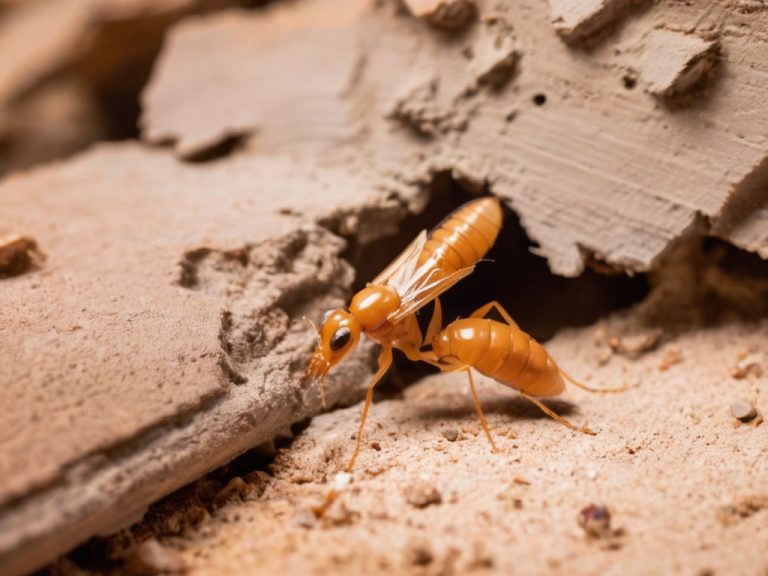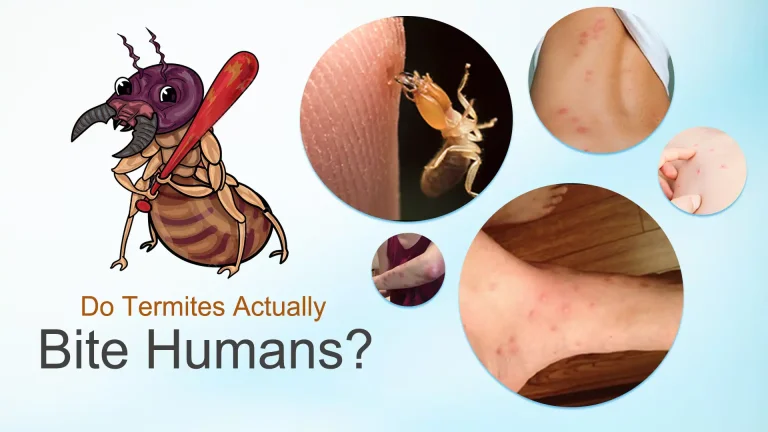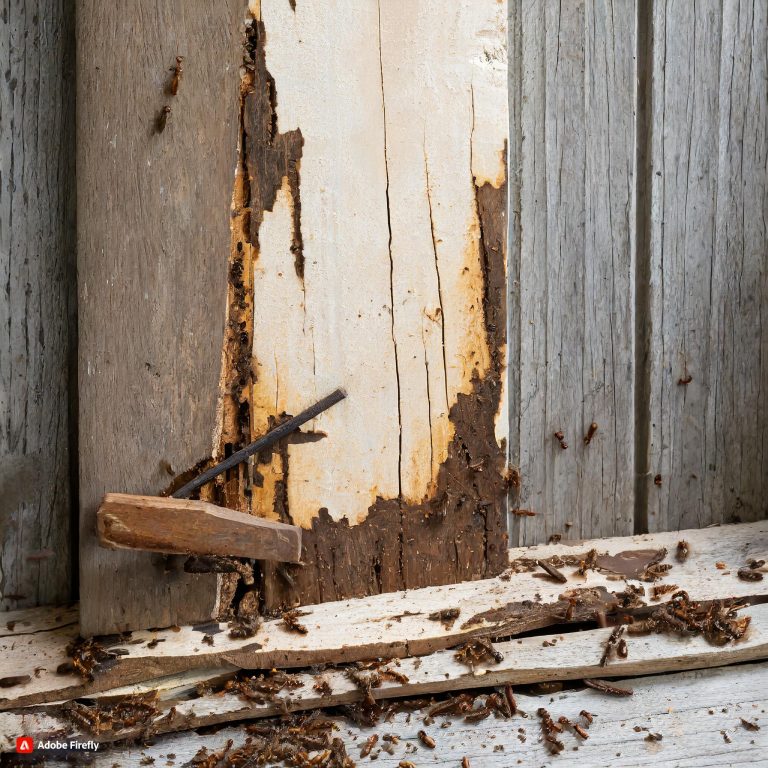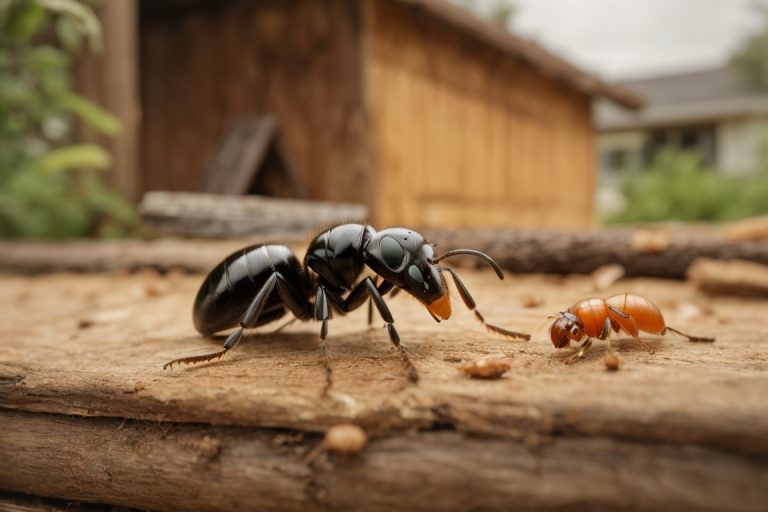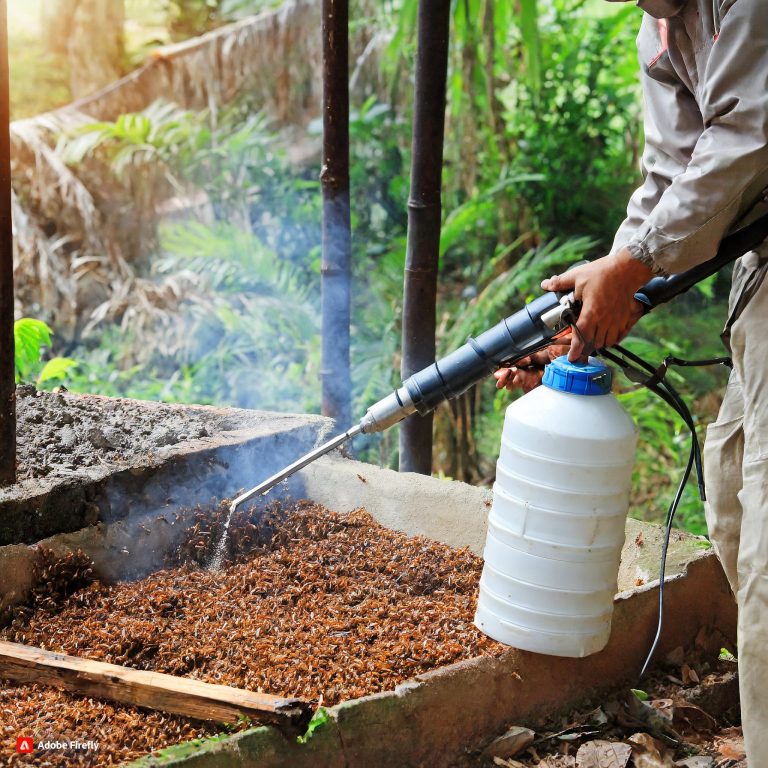What Causes Termites? Main Reasons for Termite Infestations
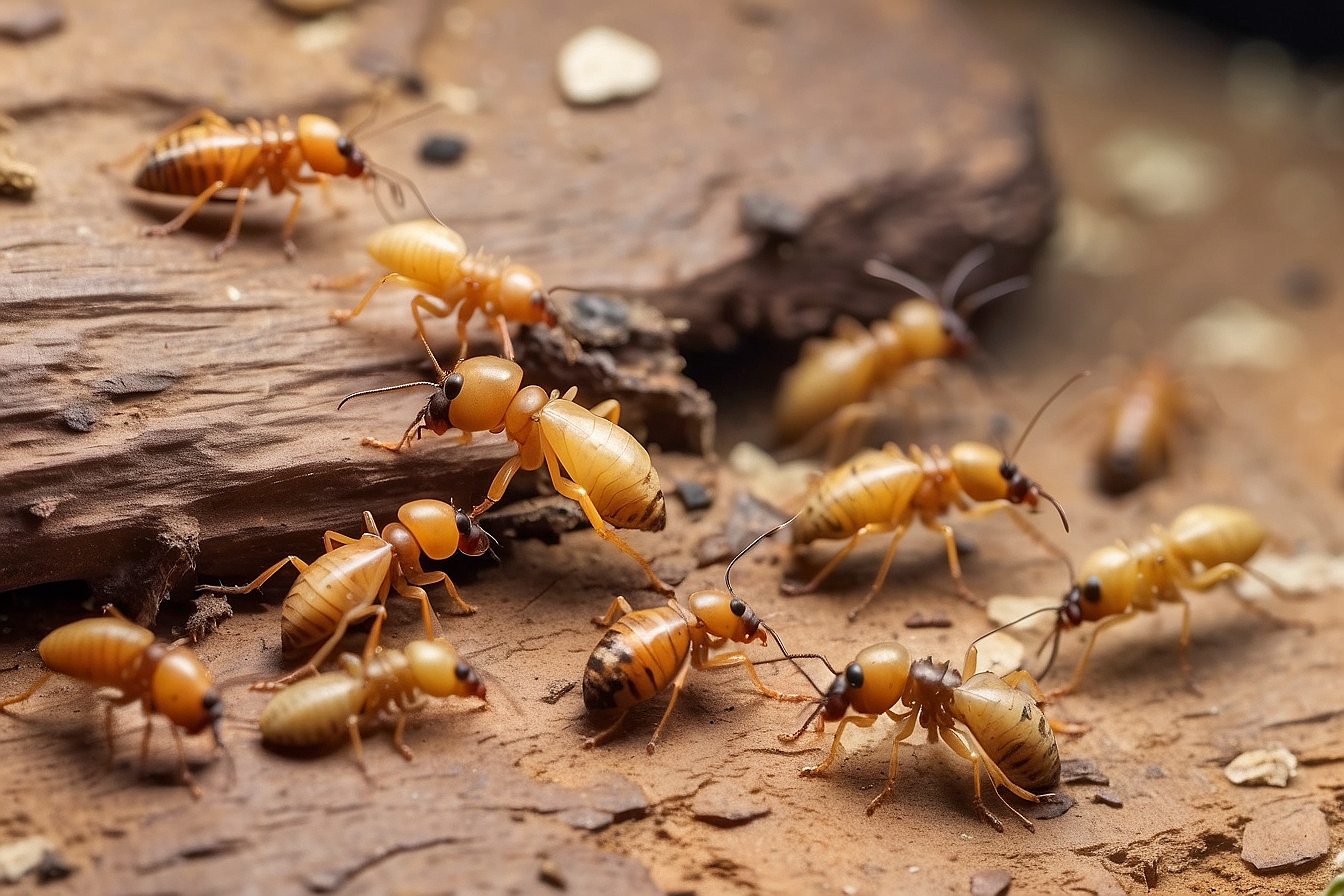
- Overview: Reasons lead to a termite infestation
- 1. Suitable Local Climates and Seasons
- 2. Moist or Damp Areas
- 3. Cracks and Openings in Foundations
- 4. Earth-to-Wood Contact
- 5. Nearby Wood Piles
- 6. Availability of Wood Food Sources
- 7. Conducive Environments With Proper Temperatures
- 8. Nearby Established Termite Colonies
- 9. Lack of Preventative Treatment
- Recap: What Attracts Termites and Causes Infestations?
- How Do Termites Start? Where Colonies Originate
- What Causes Termites To Die? Reasons for Termite Mortality
- What Causes Termites In A House?
- What Causes Termites In Apartments & Condos?
- How Do You Get Termites? High Risk Activities
Termites are destructive pests that can cause major damage to your home. But what actually causes termites in the first place?
There are certain conditions that attract termites and enable them to invade your house. As a homeowner, being aware of these termite attraction and access risks is the first step toward effective prevention..
In this article, we’ll cover the 9 most common causes of termites, so you can protect your home.
Overview: Reasons lead to a termite infestation
Here are the main things that lead to termite invasions:
- Suitable climates and seasons
- Moist or damp areas
- Cracks and openings in foundations
- Earth-to-wood contact
- Nearby wood piles
- Availability of food like wood
- Conducive environments with proper temperatures
- Presence of existing termite colonies nearby
- Lack of preventative treatment
Read on for more details on each factor that results in destructive termite infestations.
1. Suitable Local Climates and Seasons
The climate and weather in your region can determine if conditions are right for termites. Termites prefer warm temperatures with high humidity.
During spring and summer when temperatures rise, the chances of spotting termites goes up. The winged reproductives emerge and swarm during these times to start new colonies.
Drywood termites thrive in hotter drier areas, needing less moisture to survive. But other types of termites species like subterranean and dampwood termites need damp conditions to successfully colonize and cause infestations.
If you live in an already termite-prone region with seasons supporting them, be extra vigilant to prevent invasions.
2. Moist or Damp Areas
Excess moisture is problematic because all species of termites are attracted to humid conditions as They require a certain level of humidity in their environments to prevent dehydration.
Some specific sources of moisture that can enable termites include:
- Leaky roofs or pipes
- Flooding or standing water issues
- Excess mulch or soil against foundations
- Poor drainage near your home
- Overwatered lawns and plants
- Tree roots searching for water
- Hollow porous blocks holding moisture
Even small leaks or periodic dampness issues can be enough. Eliminate moisture access wherever possible. And if you can’t, monitor those vulnerable areas for signs of termite activity.
3. Cracks and Openings in Foundations
Your home’s foundation and exterior walls provide critical separation from potential termite colonies in surrounding soil.
But any cracks, gaps, or penetrations in your foundation become easy access points for invading termites. Common problem areas include:
- Cracks in slab foundations
- Spaces around pipes, wires and conduits
- Gaps around window frames or doors
- Separation between materials like masonry and wood
- Hollow block voids open at the top
- Loose fitting exterior panels or vents
Inspect all foundation edges carefully inside and out for potential openings. Use concrete, steel, copper mesh, or termite sealants to seal any holes. This eliminates critical entryways for termites trying to reach wood food sources inside.
4. Earth-to-Wood Contact
Wood that has direct contact with soil faces extremely high termite invasion risks. Subterranean termites live underground and tunnel upward to devour any wood food sources they find.
Some examples include:
- Wood forms used when pouring concrete against soil
- Wood siding, studs or sheathing touching ground
- Landscape timbers on ground
- Fence posts embedded in soil
- Debris buried near foundation
- Tree roots spreading under home
A basic rule is to maintain at least 6 inches of clearance between any wood and soil surfaces. Physical metal termite barriers can also be installed during construction. But avoiding direct earth-wood pathways is the first priority.
5. Nearby Wood Piles
Stacks of firewood, lumber, mulch, compost, or other wood materials near your home’s foundation should be avoided.
These wood or cellulose-based piles serve as ideal nesting habitats and food sources for termites. Colonies can grow rapidly and eventually spread towards larger wood food supplies inside your walls and framing.
Keep all wood supplies elevated off the ground and as far from your home as possible. Never store wood against exterior walls where termites can follow the heat signature straight to potential entry points. This cuts off easy boot camps for invading colonies.
6. Availability of Wood Food Sources
At the end of the day, termites need a reliable wood food source to survive. While your home likely has no shortage of internal framing lumber, siding, furniture and other cellulose nourishment, you can moderate risk by managing wood accessibility.
Since termites travel inside spaces behind veneers, through voids, and along plumbing and wiring paths in search of food, consider these tips:
- Avoid hollow wood paneling or decorative timbers against exterior foundation walls
- Ensure insulation leaves no hidden cavities or wood access beyond wall surfaces
- Keep interior wood humidity below 20% using fans or dehumidifiers
- Store extra wood furniture centrally or elevated within your home
- Install solid concrete raised curbs with metal termite barrier at minimum 6 inches above soil level
The less wood directly exposed to known termite access paths from outside, the lower the risk of internal damage.
7. Conducive Environments With Proper Temperatures
As mentioned earlier, specific temperature and moisture conditions enable termites to thrive. Making conditions inside your home less hospitable can deter infestations.
Termites prefer warmer areas between 70-90 F. Some ways to avoid ideal termites environments include:
- Lowering basement and crawlspace temperatures with enclosed air conditioning units
- Increasing air circulation with fans to eliminate hot spots
- Installing vapor barrier ground liners in dirt basements or crawlspaces
- Growing outdoor shade trees to cool areas near your home
- Choosing glass windows over less conductive materials like brick or cement near soil level
While temperature control has limits, every degree of intervention helps reduce odds that your home meets termites’ preferred living conditions.
8. Nearby Established Termite Colonies
An existing termite colony already feeding on wood nearby poses an extremely high threat of invasion. Nearby high risk areas include:
- Adjacent lots or gardens with known termite populations
- Shared structural walls like condos, duplexes or townhouses
- Trees with active nests growing towards your home
- Land clearing or new construction stirring up colonies
- River banks or shorelines where moisture enables large nests
Perform thorough annual termite inspections to detect potential penetration risks early. Treatment with termite-resistant materials during building construction is also critical for high risk regions.
Physical and chemical barriers can help, but remain vigilant to the risk from surrounding nests already acclimated in your local environment.
9. Lack of Preventative Treatment
With so many termite attraction and access risks around most homes, prevention is critical.
If you live in a termite-prone area, annual inspections and preventative treatments are essential. Techniques like soil termiticides, spot treatments, baits, or wood sealants stop infestations before they destroy walls, floors, and framing.
DIY spraying or baiting has limits. Professional pest control company teams have the experience, tools, and solutions to establish ongoing plans tailored to your home’s risks. Costs pale in comparison to fixing termite damage once colonies invade behind walls.
Don’t wait until the signs of sawdust piles, shelter tubes, or winged swarms confirm it’s too late. Rather than tackle termite elimination alone with limited success, Call local pest control pros at the first signs of infestation to effectively get rid of termites.”
Recap: What Attracts Termites and Causes Infestations?
Termites need very specific conditions to successfully infest and damage your property. By understanding and controlling what enables termite invasions, you can stop them in their tracks.
The key takeaways are:
- Monitor for suitable outdoor temperatures and seasons supporting termites
- Eliminate all moisture sources and damp areas
- Seal any foundation cracks or gaps allowing entry
- Remove direct earth-to-wood contact under or around your home
- Relocate wood piles away from exterior walls
- Moderate wood moisture levels and accessibility when possible
- Avoid ideal 70-90 F climates inside your home
- Watch for nearby established termite nests and colonies
Following these guidelines minimizes the factors allowing devastating termite infestations to start in the first place. Act now before colonies invade and ruin your home’s structural integrity.
How Do Termites Start? Where Colonies Originate
Termites form new nests and colonies in a few key ways:
Swarms – During spring and summer, existing mature termite colonies produce winged reproductive termites that swarm out to mate. After landing, they shed their wings, pair up, and search for nesting sites to start their own colony together. Usually this means digging chambers in soil or finding small wood crevices.
New Construction – When buildings go up or land is cleared, existing underground termite colonies get disrupted or exposed. They quickly spread to the easy wood food and shelter newly created nearby. This is why treatment during construction is so critical in termite regions.
Transport – Termites sometimes get transported in infested wood or items to new areas they wouldn’t reach on their own. For example, used railway ties installed in a garden bed near a home. Any transfer of colonies to a location with ample food starts new nests.
Climate Change – Some evidence shows warming climates allowing termite species to expand northward to new geographies. This establishes entirely new colonies where they previously couldn’t survive seasonal temperature extremes. An emerging concern as global warming progresses over time.
So while existing termite mounds certainly spawn new ones nearby through seasonal reproductive swarming, humans also play a role enabling termites to start colonies in new areas. Avoiding transport and controlling infestations during construction in hot zones is key to limiting spread.
What Causes Termites To Die? Reasons for Termite Mortality
What circumstances or actions result in terminating termite colonies? Here are the primary ways the demise of termite nests occur:
Pesticides – Both professional and DIY chemical pest control solutions are designed specifically to eliminate termite infestations. Liquid termiticides drench soil to form long-lasting barriers deadly to the tunneling insects. Baits also slowly kill colonies from the inside via consumed cellulose intended just for them. When properly applied around and under structures, termiticides exterminate local nests.
Temperature Extremes – While termites prefer moderate warm conditions between 70-90 F, excess heat or cold can wipe out colonies. Sustained temperatures above 130 F or below 40 F will eventually kill termites over time. That’s why effective fumigation requires tenting and heating a structure to 130+ degrees for eradication. Deep freezes also render outdoor nests unviable long-term, forcing populations to retreat deeper underground.
Starvation – Without a consistent cellulose food source like wood to consume, termite workers and nymphs will perish within days or weeks in a typical colony. Soldiers and reproductives may survive slightly longer from reserved fats or energy stored in their larger bodies. But cut off sustained access to timber and a local nest cannot survive. Impervious concrete foundations, metallic soil barriers, or wood protecting sealants starve out nearby infestations.
Moisture Loss – All termites require moderate humidity levels to thrive. Eliminating water access causes fatal dehydration effects for colonies. Fixing plumbing leaks, improving drainage, installing vapor barriers, or excessive drying/aridity indoors or underground makes areas uninhabitable for the soft-bodied insects. They either retreat or die off without enough ambient moisture.
Natural Predators & Pathogens – Termites face threats from certain birds, reptiles, ants, spiders and other insects attracted to the high density colonies. Microbial or fungal infections can also wipe out nests. And helpful nematodes added to soils target termites. While natural enemies slow expansion, the impacts are usually subordinate to intentional control measures and culling of food supplies for eliminating termite masses.
When multiple fatal conditions combine, local elimination becomes certain and spreads to neighboring colonies over seasons. Prevent termites from ever gaining footholds using barriers and starvation, then employ targeted nest-killing tactics at the first signs of activity. Eliminate conducive conditions, block food access, raise temperatures, and apply termiticides to halt infestations in their tracks.
What Causes Termites In A House?
Once termites establish outdoor nesting colonies surrounding your home, they eventually find ways to breach the perimeter structure to reach abundant wood food supplies inside. But exactly how and why do termites enter your home?
Cracks & Crevices – Like any pest seeking food and shelter, termites exploit weaknesses in exterior walls and structural joints. Foraging workers locate minute foundation cracks, gaps around pipe penetrations, missing grout in brickwork, unfinished edges, unmatched veneers, loose vents, and tiny separations in the defensive perimeter. Then masses follow en masse to expand footholds inside.
Earth Contact – When wood siding, framing, or sheathing makes direct contact with soil, subterranean termites literally build covered mud tunnels straight from their underground colonies to the interior wood buffet. Carpenters must maintain code-specified clearance between exterior wood components and earth. Any bridges become infested.
Water Leaks – Plumbing, roof, surface flooding or condensation leaks send seeking workers inward chasing humidity and cellulose. Damaged/aged seals around showers, windows and doors also invite exploratory infiltration. Termites penetrate further seeking the payoff of massive amounts of lumber and furnishings to feast.
Piggyback Rides – When transporting anything made of wood found in termite zones into your home, you risk bringing eggs, nymphs or adults along for the ride inside wall voids and crawl spaces. Then colonies spawn, protected and undiscovered, until workers need to expand the nest. Carefully inspecting secondhand wood before moving is essential.
Swarm Invaders – During the spring swarming season, airborne reproductive termites land in search of immediate shelter and wood after shedding wings. If they drop onto roof eaves, siding, window sills or vent openings, the paired couple starts new colonies inside the building itself – no longer needing underground access from the exterior.
Once inside, reproductive termites mate and the queen begins laying up to 2,000 eggs per day, exponentially expanding the foothold. Worker termites secretly spread further seeking new food sources inside walls, ceiling and floors. Stop them before they ever make it across your defensive perimeter. Be vigilant.
What Causes Termites In Apartments & Condos?
Unlike detached single family homes, apartments, condominiums and townhouses feature shared common walls and floors with other units in the same building or complex. This interconnectedness via pipes, wires, shared framing, passageways and little to no building separation presents unique termite risks.
If a single unit (or common area) suffers infestation, contiguous spread across wall voids to other units becomes inevitable until caught and treated. Let’s examine how they infiltrate in the first place.
Common Foundation/Slab – Like all buildings with soil contact, multifamily structures rely on solid concrete work to block underground entry from surrounding ground-nesting colonies. But step cracks, low foundation edges or plumbing penetrations can allow access to units bordering breaches.
Shared Walls & Floors – Adjoining units enable termites to expand secretly once inside almost anywhere in a building. Hollow drywall mud, electrical lines, gaps around interunit firewalls or pipes, cracks in party walls or ceilings, doorsill interfaces and the equivalent all provide hidden highways to spread.
First Floor & Basements – When soil-connected lower level units get infiltrated via slab gaps or unfinished crawlspace access, upward movement ensures spread to upper floors until the entire building is impacted. Multilevel damage can be well underway before telltale signs appear on lower levels where they started.
Deferred Exterior Maintenance – Cracks in brickwork, loose siding, damaged entry points for condenser/dryer/bathroom ventilation, unattended leaks into walls (especially with standing water) and other exterior weaknesses threaten the entire building when exploited by invaders.
** DIY & Professional Prevention** – Unlike detached homes, multifamily building residents themselves have very limited ability to perform effective prevention treatments or inspections along common walls and passageways. Instead they rely almost entirely on hired building management/maintenance staff to establish protective perimeter treatments, baiting and vigilant monitoring of vulnerabilities. Neglect exposes all.
In summary, the very interconnected nature of conjoined multifamily structures allows rapid hidden spread across units once termites exploit any access point in a building. Ensuring professional preventative care and urgent response to discovery delays or stops ruinous spread facility-wide. Don’t wait until it’s too late.
How Do You Get Termites? High Risk Activities
Certain actions raise your risk of bringing termites unknowingly to your home landscape or actually inside the structure itself. Be aware of these behaviors that can get termites infesting your property when avoided:
Using Infested Secondhand Construction Materials – When sourcing used brick, granite, lumber, fencing or similar for projects, hidden eggs, larvae or termites may arrive with them, then migrate out establishing new colonies in surrounding landscaping or gardens using your home for shelter. Closely inspect materials sourced from termite zones first.
Relocating Wood Furniture from Infested Homes – Similarly, moving wood furniture, shelving and décor items from one home to another risks transporting termites hidden within the woodwork itself to your new uninfested home. Never assume items are safe without thorough inspection when sourcing secondhand woods

